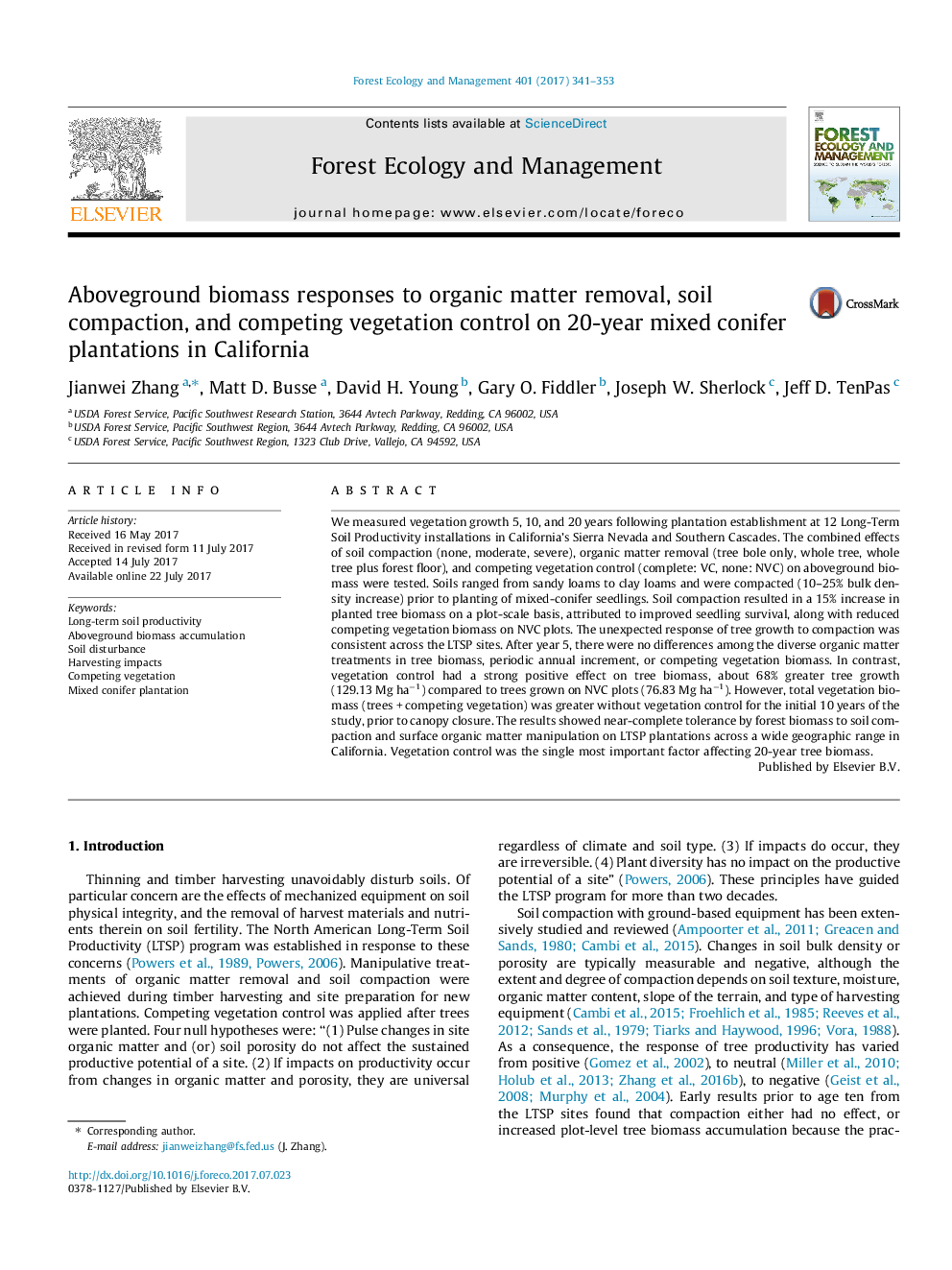| کد مقاله | کد نشریه | سال انتشار | مقاله انگلیسی | نسخه تمام متن |
|---|---|---|---|---|
| 4759327 | 1421357 | 2017 | 13 صفحه PDF | دانلود رایگان |
- Biomass responses to soil disturbances were examined across California LTSP sites.
- Positive effects of compaction on tree biomass were through enhanced tree survival.
- Organic matter removal did not significantly affect aboveground biomass.
- Competing vegetation control was the single most important factor affecting biomass.
We measured vegetation growth 5, 10, and 20 years following plantation establishment at 12 Long-Term Soil Productivity installations in California's Sierra Nevada and Southern Cascades. The combined effects of soil compaction (none, moderate, severe), organic matter removal (tree bole only, whole tree, whole tree plus forest floor), and competing vegetation control (complete: VC, none: NVC) on aboveground biomass were tested. Soils ranged from sandy loams to clay loams and were compacted (10-25% bulk density increase) prior to planting of mixed-conifer seedlings. Soil compaction resulted in a 15% increase in planted tree biomass on a plot-scale basis, attributed to improved seedling survival, along with reduced competing vegetation biomass on NVC plots. The unexpected response of tree growth to compaction was consistent across the LTSP sites. After year 5, there were no differences among the diverse organic matter treatments in tree biomass, periodic annual increment, or competing vegetation biomass. In contrast, vegetation control had a strong positive effect on tree biomass, about 68% greater tree growth (129.13 Mg haâ1) compared to trees grown on NVC plots (76.83 Mg haâ1). However, total vegetation biomass (trees + competing vegetation) was greater without vegetation control for the initial 10 years of the study, prior to canopy closure. The results showed near-complete tolerance by forest biomass to soil compaction and surface organic matter manipulation on LTSP plantations across a wide geographic range in California. Vegetation control was the single most important factor affecting 20-year tree biomass.
Journal: Forest Ecology and Management - Volume 401, 1 October 2017, Pages 341-353
